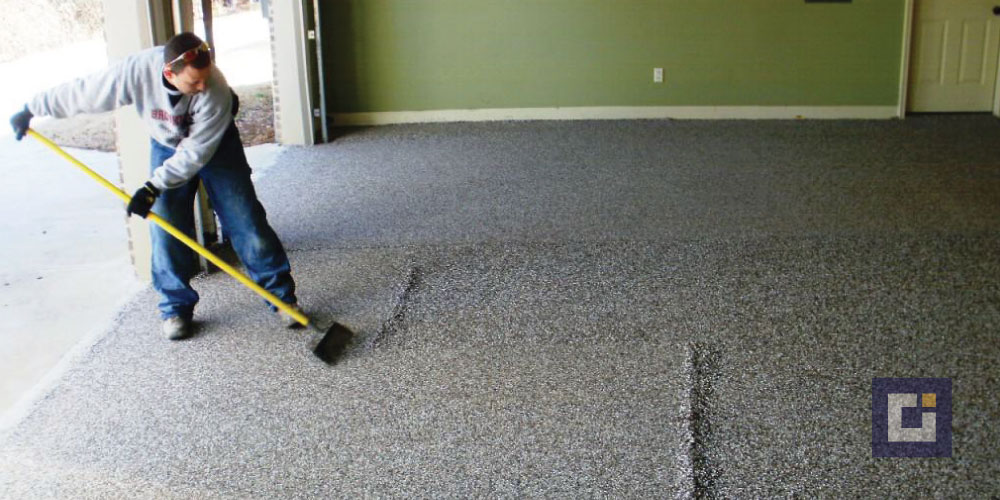The ultimate Guide to Concrete Coating: Benefits, Types, and Application Techniques

Concrete coating is a versatile solution that enhances the durability, appearance, and functionality of concrete surfaces. Whether used in residential, commercial, or industrial settings, concrete coating offers a range of benefits and can be customized to meet specific requirements. In this comprehensive guide, we’ll explore the benefits of concrete coating, different types available, and the application techniques involved. Enhanced Durability: One of the primary advantages of concrete coating is its capacity to improve the durability of concrete surfaces. The coating forms a protective layer that shields the concrete from wear and tear, including foot traffic, vehicle traffic, and environmental factors like Uv rays, moisture, and chemicals. Improved Appearance: Concrete coating concrete stain in a number of colors, textures, and finishes, allowing property owners to customize the appearance of their surfaces. Whether you prefer a shiny finish for a modern look or a uneven finish for added grip, there are options available to suit every style.
Increased Safety: Certain types of concrete coatings, such as slip-resistant coatings, can significantly improve safety by reducing the risk of slipping and falls. This is especially beneficial in high-traffic areas or locations prone to wet conditions. Easy Maintenance: Sprayed concrete surfaces are safer to clean and look after compared to uncoated surfaces. The protective layer resists stains, dirt, and grime, making regular maintenance tasks simpler and more efficient. Longevity: Properly applied concrete coatings can extend the life expectancy of concrete surfaces, saving property owners time and money on repairs and substitutes in the long run. Epoxy Coatings: Epoxy coatings are popular for their high durability and chemical resistance. They are popular in commercial and industrial settings where heavy-duty protection is required. Epoxy coatings come in various colors and can be customized with additives like anti-slip materials. Polyurethane Coatings: Polyurethane coatings are recognized for their flexibility and UV resistance, making them suitable for outdoor applications. They provide excellent protection against weathering, scratching, and chemical exposure, making them ideal for areas come across harsh conditions.
Polymer-bonded Coatings: Polymer-bonded coatings are versatile and easy to apply, making them a popular choice for residential projects. They offer good UV resistance and are available in a range of colors and finishes, including matte, satin, and gloss. Polyaspartic Coatings: Polyaspartic coatings are a fast-curing option that provides quick transformation times for projects. They offer exceptional durability, chemical resistance, and UV stability, making them suitable for high-traffic areas and outdoor applications. Decorative Coatings: In addition to protective coatings, there are decorative coatings available that can transform concrete surfaces into successfully appealing spaces. These coatings occasionally includes metal finishes, flake systems, rubber-stamped overlays, and more, enabling endless design possibilities. Surface Preparation: Proper surface preparation is essential for a successful concrete coating application. This may involve cleaning the surface, repairing breaks or damage, and ensuring the concrete is without any pollutants such as oil, fat, and sealers.
Primer Application: In some cases, a primer may be asked to promote adhesion between the concrete substrate and the coating. The type of primer used will depend on the particular coating system being applied. Coating Application: The chosen coating is applied using various techniques, such as roller application, apply application, or trowel application, depending on the product and the desired finish. Multiple applications may be required for optimal protection and appearance. Curing and Drying out: After application, the coating needs sufficient time to cure and dry. This process may vary depending on the type of coating and environmental conditions. Proper curing ensures the coating accomplishes its full strength and durability.
Maintenance: Once the coating is fully cured, regular maintenance is essential to preserve its integrity and appearance. This may include routine cleaning, routine assessments for damage or wear, and timely repairs if needed. Concrete coating offers a range of benefits, from enhanced durability and appearance to improved safety and longevity. With numerous kinds of coatings available and advanced application techniques, property owners can do the perfect combination of functionality and style for their concrete surfaces. Whether it’s a residential entrance, a commercial floor, or an industrial storage place, concrete coating gives a cost-effective solution for protecting and enhancing concrete surfaces for years into the future.
Leave a Comment